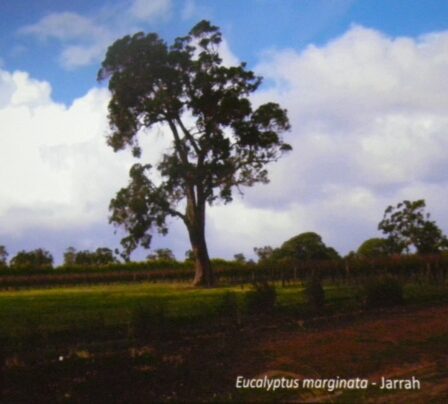Eucalyptus: the Good, the Bad, and the Ugly
Once upon a time Californians loved eucalyptus, or as Matt Ritter calls them, eucalypts. From Kate Sessions to my husband and me, eucalypts were welcomed with open arms. They are no longer favored; shunned because of their shallow and invasive roots, the oil and branches they drop copiously with no regard for whatever is beneath them, and because they burn ferociously in wildfires.
Ritter, from Cal Poly in San Luis Obispo, spoke to the Mission Hills Garden Club about these trees. Thirty-three per cent of all the trees in our state’s urban forests are native to Australia. A quarter of our urban trees come from Eastern Asia, China and Japan; and only thirteen per cent come from Europe and the Mediterranean. Some of the Australian trees we see in Mission Hills besides the eucalyptus are Acacias, Bottle Brushes, Melaleucas and Pittosporums.
Eucalypts come in many sizes and shapes with a multitude of leaf types and flowers. They are the second most important solid timber and paper pulp trees in the world. (Pine is number one in importance.) In addition to its use as timber, the wood is also used for plywood, fiberboard, pulp, poles, firewood, charcoal, essential oils, honey, shelter, and decoration. There are over 75,000 square miles of eucalypts planted worldwide.
While there are over seventy naturalized species (“reproducing and maintaining populations outside native ranges,”), the three most common species are Blue gum, Red gum, and Flooded gum. In California of the 374 species introduced, 202 were still alive as of 2010. 38 species are most prevalent and 18 have naturalized in the state
These trees gained popularity due to greed. The California Eucalyptus Timber Company fed on human gullibility. They maintained that owning productive land would keep the wolf from the door, and people were making a great deal of money selling timber. Californians began investing in Eucalyptus timber. Ads promised huge profits and little to no work. In 1935, University of California’s College of Agriculture wrote, “The eucalyptus is now one of the outstanding trees on almost any California landscape where trees have been planted. Many people fail to realize that this tree is not a native. At this late date (1935) we can pay our respects to the early pioneers, such as William C. Walker and Stephen Nolan, and hope that some of our present generation also will be inspired to become pioneers in the introduction of worthy exotic trees to supplement our rich native flora”
The Eucalypts have lost much of their popularity. The Audubon Observer called it “America’s Largest Weed.” It has been blamed for myriad wildfires. According to Rich Stallcup, overwintering birds are having serious problems “caused by the non-native blue gum tree.” Ritter disagrees. He says, Eucalypts have been shown not to cause any problems with birds. The Audubon article was full of misinformation that has mostly been discredited at this point by peer reviewed reach.” Now they are the “most abundant and controversial non-native trees in California” says Ritter. In their favor, they do control erosion, provide “wildlife habitat, valuable landscape and heritage trees.” On the other hand, they are “America’s largest, most fire prone, most dangerous, bird killing, weeds,” claim their detractors. For more information on this issue, go to https://milliontrees.me/2013/11/05/eucalyptus-trees-do-not-kill-birds/.
Before you plant a eucalypts, do a bit of research. There are several species including blue gum and red gum which should no longer be planted in California. However, not all eucalypts are messy, not all are huge, and many are quite beautiful. Diversity is important, especially with climate change. The trees coming from Southwestern Australia are more appropriate to our climate. They are smaller, not fire prone, their bark stays put, and they are drought tolerant. If you would like to learn more about Australian trees in California, email Matt at mritter@calpoly.edu.
There will be no meeting in August, but September is membership month and our first meeting for this season of Mission Hills Garden Club. We meet on the fourth Wednesday of the month from 6 to 8 p.m. at 4070 Jackdaw, Mission Hills United Church of Christ.
Category: Local News








